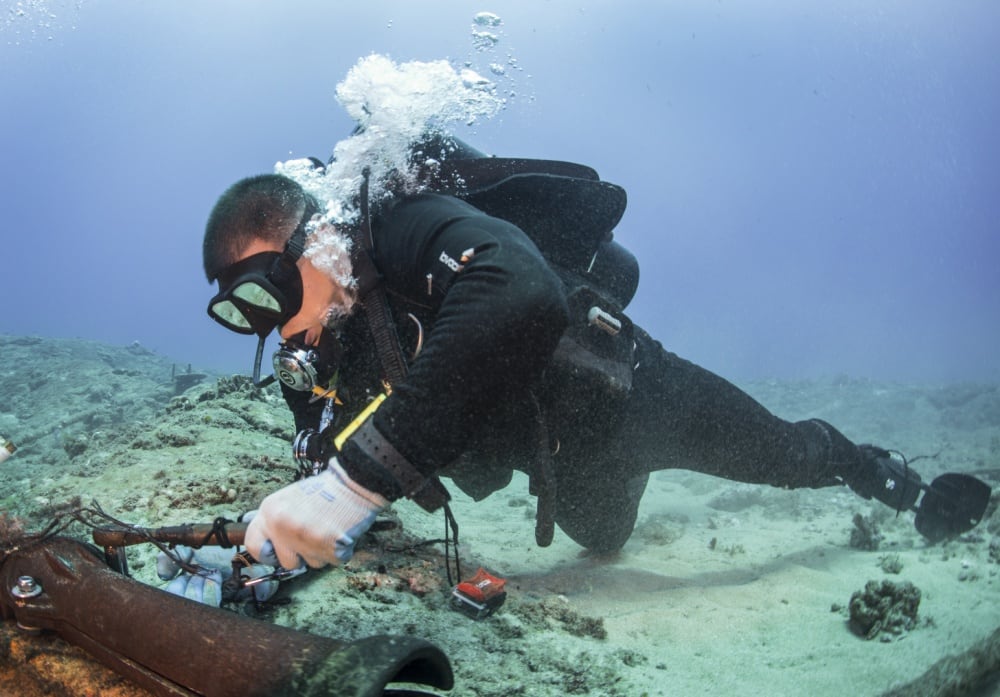As we enter the second year of the Trump administration, the president’s inability to advance a firm, coherent U.S. position toward Russia persists despite a torrent of belligerent behavior by the Kremlin toward the West.
Indeed, on the day he announced a new national security strategy that purported to challenge Russia, President Donald Trump could not help but publicly exult about the unctuous phone call he had received from Russian President Vladimir Putin the day before.
It is clear President Trump still clings to a wistful hope that Putin will become a trustworthy partner in world affairs. This is despite Russian election meddling in the U.S. and Europe, provocative military exercises near our NATO allies, continued military intervention in eastern Ukraine, illegal and dangerous flyovers of American and British naval vessels in international waters, and the deployment last year of the first Russian spy ship off New England’s coast since the end of the Cold War.
Click here for full coverage from the Munich Security Conference.
The British Royal Navy’s public disclosure in December that Russian submarines are prowling near undersea cables in the North Atlantic is now the latest in this string of concerns. These communications conduits are a vital link between North America and Europe, the two largest economic zones in the world.
Despite the proliferation of satellite communications, over 90 percent of internet traffic, telephone communication and even telegraph signals pass along undersea cables. The lines remain as vulnerable today as they were in World War I when the British Navy cut German telegraph lines lying on the seabed of the English Channel. Whether this renewed Russian activity seeks to eavesdrop on cable-borne communications, or aims to survey them so that they can be more easily severed during a conflict, the dramatic effect of such interference cannot be overstated.
The steady increase in submarine activity over the last five years is an unmistakable sign that Russia has recovered much of the undersea capability it lost with the collapse of the Soviet Union. As recent public reports issued by the Office of U.S. Naval Intelligence have documented, Putin’s government has devoted sizable resources to recapitalizing the desiccated Russian Navy, with particular emphasis on submarines.
The Russian military has also used the conflict in Syria as a test bed for new capabilities, including submarine-launched cruise missile strikes. The commander of the Russian Navy recently boasted that its submarine fleet achieved 3,000 days at sea in 2016, matching its Cold War level of operations. When I asked former NATO commander Adm. James Stavridis about the scale of Russian undersea activity at a House Armed Services Committee hearing, he testified along these same lines, noting that Russian subs were operating at “70-80 percent” of what we saw during the Cold War.
RELATED

In the final two years of the Obama administration, our country took steps in response to Russia’s expanded submarine fleet and its increased activity. The Department of Defense began preparations in 2015, and Congress has since provided significant funding to deploy new P-8 Poseidon submarine hunters to Iceland’s Keflavik air base, a significant upgrade from the legacy, propeller-driven P-3 Orions that had entered the naval service back in the 1960s and had deployed to locations around Europe.
In 2016, under the leadership of former Navy Secretary Ray Mabus, the Navy released an updated force structure assessment, or FSA, that called for growing the U.S. fleet from 278 ships to 355. The study focused its largest investment in our submarine force, which today is retiring submarines at a faster rate than they are being replaced, calling for increasing the minimum force from 48 to 66 submarines. It also reaffirmed the need for anti-submarine warfare platforms in our surface fleet.
The road map for a vigorous response to Putin’s aggressive posture is in place. Our NATO partners, who have a front-row seat to the Russian Navy’s hostile presence, are ready to join with the U.S. in protecting the undersea realm. The FSA lays out a shipbuilding plan for the Navy to meet national security requirements as well as commitments to allies. Congress went far beyond the administration’s anemic 2018 ship-construction budget request by passing a National Defense Authorization Act that significantly increased shipbuilding and authorized the construction of three Virginia-class submarines per year starting in 2020. Congress and the world will be watching to see what the administration does next to make good on these efforts.
Putin’s actions speak much louder than his words. He has made his determination to poke and prod our vulnerability with asymmetric tools like cyber intrusion, misinformation and undersea provocation. The only question now is whether the Trump administration will demonstrate the leadership necessary to safeguard worldwide freedom of navigation and the integrity of communications lines in the Atlantic. It will require a clear-eyed understanding of the dynamic threat from Putin’s Russia and a steady, meaningful commitment to protecting an open maritime domain, from which all nations should benefit. It is time for the administration to wise up to Putin’s act.
Rep. Joe Courtney, D-Conn., is the ranking member of the House Seapower and Projection Forces Subcommittee.








